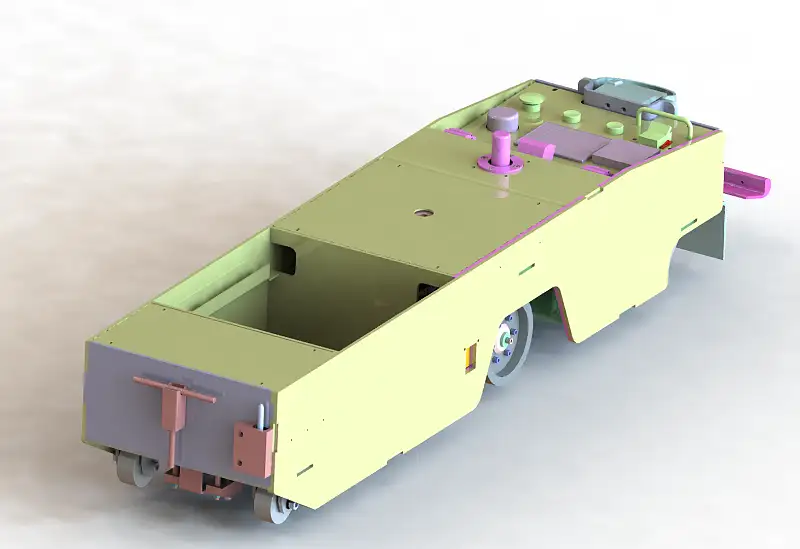In automated assembly lines, material supply and collaborative work are key factors that can directly affect the operational efficiency and quality of the production line. In order to solve this problem, more and more enterprises are adopting Automatic Guided Vehicles (AGVs) as a solution for material supply and collaborative work.
1、 Research on AGV in Material Supply
Automatic Guided Vehicle (AGV) is an autonomous autonomous autonomous vehicle that can accurately and stably transport materials on the production line. In traditional assembly lines, material supply is usually done manually, which poses uncertainty and inefficiency due to human factors. AGV, on the other hand, can achieve automation and accuracy of material supply through preset paths and intelligent navigation systems, greatly improving the efficiency and accuracy of material supply.
An important issue in the research of AGV material supply is path planning. In automated assembly lines, the path of material supply needs to consider multiple factors, such as the layout of the assembly line, the type and quantity of materials, etc. Researchers can effectively reduce the time and energy consumption of AGV transportation by optimizing algorithms and intelligent path planning systems.
In addition, material identification and positioning are also key technologies for AGV material supply. By installing sensors and visual systems on AGVs, materials can be detected and identified in real-time, and accurately positioned at corresponding positions on the assembly line. This not only improves the accuracy of material supply, but also avoids assembly errors caused by inaccurate material positions.
2、 Research on AGV in Collaborative Work
Collaborative work among multiple AGVs is crucial in automated assembly lines. Through reasonable scheduling and collaboration, conflicts and collisions between AGVs can be minimized to the greatest extent, improving the operational efficiency of the entire production line.
A key issue in the research of AGV collaborative work is AGV scheduling. By developing reasonable scheduling algorithms and optimization models, researchers can minimize the waiting time and conflict frequency of AGVs while meeting material supply demands. At the same time, the performance differences and task priorities of different AGVs can also be considered to achieve more flexible and efficient collaborative work.
Communication and coordination between AGVs are also key technologies for collaborative work. By establishing a communication network between AGVs, information sharing and real-time scheduling can be achieved. Through information sharing, different AGVs can collaborate together, avoiding repetitive work and conflicts, and improving the collaborative efficiency of the entire production line.
The research on material supply and collaborative work strategy of AGV in automated assembly lines is an important topic, which is of great significance for improving the efficiency and quality of assembly lines. By optimizing path planning and material identification and positioning techniques, automation and accuracy of material supply can be achieved. By implementing reasonable scheduling and collaborative strategies, conflicts and collisions between AGVs can be minimized to the greatest extent, thereby improving the operational efficiency of the production line.
With the further development of technology, AGV’s research on material supply and collaborative work strategies in automated assembly lines will usher in more innovation and breakthroughs. On the one hand, the intelligence level of AGV can be improved by introducing artificial intelligence and machine learning algorithms. AGV can learn and adapt to the working laws of assembly lines, automatically adjust paths and work strategies, and further improve the efficiency of material supply and collaborative work.
On the other hand, it can further improve the perception and decision-making abilities of AGVs. By introducing more advanced sensors and visual systems, AGVs can perceive the surrounding environment in real-time and make more accurate and efficient decisions. For example, in case of unexpected situations or work changes, AGV can automatically adjust the path and re plan tasks to ensure the normal operation of the assembly line.
We can also consider deeply integrating AGV with other automation equipment to achieve more efficient and seamless material supply and collaborative work. For example, combining AGV with robotic arms, intelligent logistics systems, etc. to achieve automatic assembly and transfer of materials, further improving the automation level and overall efficiency of the production line.
The research on material supply and collaborative work strategies of AGV in automated assembly lines is of great significance for improving the efficiency and quality of production lines. Through research on optimizing path planning, material identification and positioning, and collaborative scheduling, automation and accuracy of material supply can be achieved, minimizing conflicts and collisions between AGVs, and improving the operational efficiency of production lines. With the continuous development of technology, AGV will usher in more innovation and breakthroughs in material supply and collaborative work, bringing greater potential and opportunities for the development of automated assembly lines.

